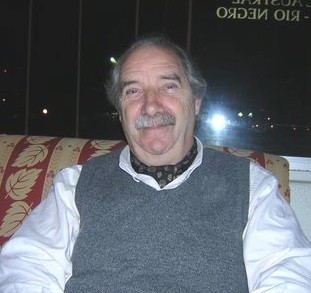
Autobiografía intelectual
Alberto Buela (*)
Yo no sé si fue Juan Romano, antiguo estudiante del seminario metropolitano y fiel discípulo del P. Lucio Gera, el más lúcido pensador americano de la religiosidad popular, cuya primera parroquia fue San Bartolomé, o el cura Pablo Di Benedetto, quien hacía muy poco tiempo había llegado desde Versailles a nuestra parroquia de Chiclana y Boedo, quien me da a leer El Criterio de Jaime Balmes, allí comencé mi carrera filosófica.
Al poco tiempo, aun estábamos en el colegio secundario, nos lleva, Di Benedetto, a conocer a Meinvielle a la Casa de Ejercicios de Salta e Independencia, porque el cura había fundado el Ateneo Popular de Versailles y los scouts argentinos. Y allí comienza una relación, no de maestro a alumno porque nunca me dio una clase, sino de traslado de información (libros, publicaciones, autores, familia de ideas, vínculos, etc.). Aun conservo un regalo suyo, los tres tomos de Historia de la filosofía de Guillermo Fraile, con dedicatoria en julio de 1964.
En el plano político conocí y traté por la época, en sus años de larga enfermedad, a José Luis Torres, el fiscal de la Década Infame. En esas visitas a su departamento de la Av. Las Heras me vinculé a su discípulo y coprovinciano Alejandro Olmos, autor de la denuncia sobre la Deuda Externa en los años 80-90.
Quien me introdujo en ese círculo fue Pepe Taladriz, hermano de Domingo, el imprentero de la Av. San Juan que le editaba los libros a Meinvielle y a todo el campo nacional, peronistas y nacionalistas.
Una anécdota: Torres nos recibía en la cama o sentado en un sofá y cuando yo le comenté que Sandino era comunista, me respondió con esa voz de trueno que tenía: No m´hijo, Sandino es nacionalista como nosotros, son los yanquis que nos quieren hacer creer que es comunista. Esto me liberó para siempre de las taras del nacionalismo parroquial y elitista, y me ubicó de un golpe en el nacionalismo popular de Patria Grande. Torres comienza a darme a leer a los pensadores hispanoamericanos que él conocía muy bien. (Pablo Antonio Cuadra, Julio Icaza Tijerino, Augusto Céspedes, Carlos Montenegro, Natalicio González, Carlos Arturo Torres, Vasconcelos y tantos otros.
Comencé la carrera en la UBA en 1966, pero enseguida vino “la colimba” y como en esa época estaba vinculado al grupo político-cultural Nueva Argentina, que en ese año fueron a Malvinas en el Operativo Cóndor (Dardo Cabo, Alejandro Giovenco, etc.), y su influencia política fue muy grande, no se me ocurrió otra cosa que estando en formación, pasando Onganía junto con el brigadier Teodoro Álvarez, grité: Masón.
Me pasé un año con ocho meses de recargo preso y el único libro que me dejaron pasar fue una gramática griega.
Salido del “la colimba” y con un conocimiento respetable del griego ático comencé a cursar materias hasta recibirme en 1972. Tuve algunos profesores significativos como Eggers Lan en “antigua”, Mercado Vera en “moderna”, Maliandi en ética, Amuchástegui en historia, Pucciarelli en metafísica y gnoseología. No más. Quienes en general se dedicaron a dictar su materia sin ningún tipo de seguimiento personal, salvo Eggers y Mercado que me demostraron una estima especial. Calculo que el primero porque sabía griego y el segundo porque estudiaba con ahínco Hegel.
Apenas termino la carrera gano un concurso de YPF para dictar clase de “humanidades” en la Universidad San Juan Bosco de Comodoro Rivadavia, claro está, no se había presentado nadie.
Me caso y publico ese mismo año mi primer libro El ente y los trascendentales con prólogo de don Julio Meinvielle (nunca supe quien pagó la edición) y desde Comodoro casi todos los días comienzo a enviarlo a todas las bibliotecas y universidades del mundo, como diciendo: “miren, también aquí en el fin del mundo se hace filosofía”.
A fines del 72 con el primer regreso de Perón al país comienza un período convulsionado que se hace imposible vivir sin participar y la participación estaba allá, en Buenos Aires.
Regreso y viajo a Córdoba a conocer a Nimio de Anquín quien por esa época había sacado el último de sus libros De las dos inhabitaciones en el hombre, la experiencia me resultó fascinante: “Ve todos esos escritos que tengo en ese estante, si yo fuera monseñor Derisi los tendría todos publicados”. “No olvide, escribir filosofía no significa publicar todo lo que se escribe”.
Me pongo a dictar clase en colegios secundarios y entro en contacto con Ricardo Maliandi quien me dirige una beca de iniciación en el Conicet tanto a mí como a mi tocayo Alberto Gorrini, desaparecido apenas comienza la Dictadura Militar.
Paso a la Universidad Nacional de Mar del Plata donde dicto antropología filosófica y gnoseología, logro participar en el II Congreso nacional de estudios clásicos en el Chaco con una ponencia Corruptio optimi pessima est, y publico mi segundo libro, que lleva el prólogo de mi tocayo Gorrini, El ente: manifestación y conocimiento donde estudio dos autores, Hegel y Santo Tomás, en cuatro temas centrales: dialéctica, acción, conocimiento y método.
A fines del 74 publico mi primer libro político filosófico: La sinarquía y lo nacional y es en este último punto donde comenzamos a trabajar sobre la idea de nacionalismo continental, gran espacio autocentrado y cultura de síntesis que nosotros denominamos “simbiosis”. “la conciencia del americano es una simbiosis, los dos elementos completos el europeo y el americano forman un mixto perfecto, una unión sustancial de ambos elementos que es la conciencia americana, análogamente diferente de los elementos de que está compuesta… la cosmovisión europea aporta la idea de jerarquía de los fines y la cosmovisión indiana el tiempo americano”.
Pero no puedo desarrollarlo luego en conferencias y charlas pues me agarra el golpe de Estado del 24 de marzo del 76. Y con un citroen 2 CV y una beba recién nacida y sin un mango, inicio mi regreso por el camino de la costa, entonces todo de tierra, hasta mis pagos de Magdalena.
Cayó así la loza de plomo sobre la inteligencia argentina. Es interesante notar que nadie, hasta el más pintado aséptico, produjo nada en el orden filosófico. Yo lo puede comprobar estudiando la obra del más significativo historiador de las ideas en Argentina, Alberto Caturelli, quien para muchos fue un hombre que vivió cómodo durante la Dictadura, sin embargo, mi tocayo no produjo ninguna obra entre los años 76 al 81. Demás está decir que todos esos años fueron para mí de lectura constante además de mi participación activa en el grupo sindical de “los 25”, quienes el 27 de abril del 79, le realizan la primera huelga general al gobierno del Proceso.
El 17 de octubre de 1981 con un pasaje de ida que me dan Osvaldo Borda y Ubaldini viajo a la Sorbona de París donde me acepta Pierre Aubenque para dirigirme primero la tesis de licenciatura (el DEA) y luego la de doctorado sobre Le fondement métaphisique de l´éthique chez Aristote, siendo los seminarios para la licenciatura sobre Plotino con Pierre Hadot y sobre Scheler con Pierre Boutang. Y es este último quien me marca a fuego. Boutang fue la antítesis de Sartre. Él fue todo. Desde secretario de Maurras cuando joven, hasta el ideólogo del Conde de París. Fue traductor de la Divina Comedia al francés, traductor varios diálogos de Platón, autor de obras de teatro, novelista, periodista y autor de grandes tratados de filosofía. El largo trato que tuve desde el 81 al 84, año en que dejó de dictar clase de metafísica en la Sorbona, me abrió la cabeza respecto de las tareas que debe realizar un filósofo. Él fue el filósofo genuinamente engagé que conocí hasta ahora.
Fue con él con quien comencé a madurar la meditación sobre América y nuestra identidad. Con él hablé de don Nimio de Anquín y sus poderosos trabajos Las dos concepciones del ente en Aristóteles y El ser visto desde América. Con él tengo una jugosa anécdota que relaté en Un juicio sobre Meinvielle.
En 1984 dicto mi primera conferencia en francés en el Palacio de Congresos de Versailles junto con Julien Freund y Alain de Benoist: hispanoamérique contre l´Occidente, años después publicada en libro en España con prólogo de Abel Posse.
De regreso a Buenos Aires con los títulos de licenciado y doctor en filosofía por la Sorbona me presento a dos concursos y “la intelligensia radical” en ese entonces en plenitud con Nino, Rabossi, Klimosky, Gariglia y Olivieri los declaran desiertos. Voy a ver al decano de filosofía, el buen amigo Rodríguez Bustamante, y me dice: Buela, que quiere, Ud. es peronista.
Me refugio en la UCA donde era decano el excelente profesor esloveno Emilio Komar y mientras él lo fue yo duré, luego me echaron.
Comienza allí mi largo período de “seminarios ad hoc ” que duran hasta hoy. Y así, sin la presión de la burocracia universitaria, vengo desarrollando mi pensamiento en distintos centros y universidades de aquí y de allá: Tierra del Fuego, San Juan, Córdoba, Cuyo, San Luis, Santa Fe, Formosa, San Pablo y Barcelona.
En 1983 reedito el trabajo político y filosófico La sinarquía y lo nacional al que le agrego un apéndice sobre José Luis Torres: el fiscal de la década infame, y en este punto comenzamos a trabajar sobre los pensadores nacionales de toda Iberoamérica.
La conferencia del 84 en Francia nos abre muchos contactos internacionales tanto en Europa como en Nuestra América. Así trabo amistad con Alain de Benoist el fundador del grupo cultural GRECE quien me incita a trabajar sobre los temas de pensamiento único vs. pensamiento disidente, identidad vs. homogenización, equidad vs. igualitarismo, pluralismo vs. uniformidad, pluriverso vs. universo, etc. Con Robert Steuckers quien me orienta hacia la geopolítica y Primo Siena, sobre todo, hacia la metapolítica. Con Javier Esparza y la producción cultural hispana más genuina soterrada por el pensamiento políticamente correcto. Con Marco Tarchi y su meditación sobre la ingeniería política del Estado post guerra fría. Con el ítalo-norteamericano Paul Piccone y la convergencia de la new left y pensamiento no conformista. Conozco, trato y me trata con singular deferencia un grande de España: Gonzalo Fernández de la Mora, seguramente el más significativo pensador político de lengua española de la segunda mitad del siglo XX. Y a todos los pensadores hispanoamericanos sostenedores de la disidencia al statu quo político-cultural vigente.
Dada mi actividad en los sindicatos que viene desde la creación de “los 25 gremios combativos”, me publican en el 84 un libro: La organización sindical con prólogo de Osvaldo Borda quien fuera uno de los secretarios generales de la CGT y secretario general de obreros del caucho y fundador de “los 25”. Allí defiendo la tesis clásica del peronismo en este tema: un solo gremio por rama, actividad u oficio, el de mayor representatividad, y la organización sindical con nacimiento de abajo hacia arriba como creación de la comunidad y no desde el Estado, como en el caso del fascismo.
En el ámbito estrictamente filosófico realizo la primera traducción del griego al castellano del Protréptico de Aristóteles, donde rescato el concepto de phrónesis como sapiencia y no como prudencia, como habitualmente se lo ha traducido. Pues el concepto de sapiencia encierra la idea de un conocimiento teórico y práctico a la vez, con lo que vuelca al castellano de manera ejemplar la idea griega de phrónesis.
Durante el 85 trabajo sobre el marco teórico de la idea de comunidad organizada tan cara al peronismo y publico: Hegel: derecho, moral y Estado. Al respecto mi viejo maestro don Andrés Mercado Vera, el máximo conocedor de Hegel en Argentina, me escribió: “Usted pone de relieve la soterrada afinidad hegeliana del pensamiento de Perón, así como la depuración popular a la que lo somete, tácitamente, el conductor... alguna vez yo también he intentado indicar esta ignorada afinidad, que mucho ha influido en mi propia toma de posición política... lo incito a que siga trabajando con igual fervor e inteligencia”. Carta del 6 de Enero de 1986.
En el 87 publico un trabajo de largo aliento: Aportes al pensamiento nacional donde desarrollo una serie de disyuntivas como comunidad o sociedad, norte o sur, liberación o dependencia, democracia liberal o democracia social, nación o constitución, patria grande o patria chica, etc.
En el 88 regreso a la publicación filosófica stricto sensu con El fundamento metafísico de la ética en Aristóteles, nuestra tesis doctoral aumentada y aggiornada.
Y en 1990 aparece mi libro El sentido de América que concentra en él la primera gran meditación de conjunto, donde profundizo mis dos tesis principales: América como lo hóspito y el tiempo americano como un madurar con las cosas opuesto tanto al time is money como al laissez faire.
Los dos años siguientes trabajamos para publicar para el V Centenario Pensadores nacionales iberoamericanos en dos gruesos volúmenes que editó el Congreso de la Nación, que incluyen dos o tres pensadores por cada uno de nuestros veintidós países. Un trabajo de biblioteca no recomendable para los alérgicos al polvo.
En el 93 volvemos a la filosofía y publicamos Epítome de antropología fruto de las clases que veníamos dictando desde la Universidad de Mar del Plata y durante varios años en el Consudec.
En el 94 publicamos Ensayos iberoamericanos sobre el ser de América, América como “lo otro”, acerca de la filosofía en y de Iberoamérica, etc. Y ese mismo año nos lanzamos a la aventura intelectual que fue Disenso.
La revista Disenso que se editó en Buenos Aires durante un lustro, desde 1994 a 1999- bajo nuestra dirección fue la primera revista en el ámbito iberoamericano de metapolítica; esto es, la disciplina que estudia las grandes categorías que condicionan la acción política de los gobiernos de turno. Hoy existe, aunque con otra orientación, la revista Metapolítica editada en la ciudad de Méjico, con la dirección del profesor Cesar Cansino.
Disenso nucleó en su seno a todo un grupo de hombres provenientes de distintas disciplinas y actividades pero que se caracterizaban por una visión no conformista de la realidad. Así llegaron a colaborar: filósofos, literatos, economistas, diplomáticos, artistas, politólogos, historiadores, poetas, políticos, entre los que hubo diputados, ex presidentes, gobernadores. Es decir, se intentó la imbricación entre pensamiento y realidad. En una palabra, pensar la realidad tal como se da, ir a las cosas mismas, diría Husserl, lo que en politología se denomina realismo político.
Fue una revista de carácter hispano o iberoamericano y no “latinoamericana” como machacona y falsamente nos denomina el pensamiento políticamente correcto. Y como tal en cada número escribieron uno o más autores hijos de nuestros diferentes países. Se pudo construir así, o reconstruir, una red de correspondientes que abarcó a todo el mundo hispano o lo que quedaba de él. Tuvimos representantes no sólo en toda América sino también en Asia, en Filipinas, y en África, tanto en Guinea Ecuatorial como en la República Saharaui en el exilio. La construcción de este tejido de relaciones hizo exclamar a ese gran pensador nicaragüense don Julio Ycaza Tigerino: “El proyecto Disenso, más que una revista, es la manifestación ostensible de que existe un pensamiento hispanoamericano que no imita, y que es singular y genuino. Además mostró la continuidad de un genuino pensamiento hispanoamericano que transitó todo el siglo XX y que tuvo su antecedente más remoto en la revista porteña Dinámica Social (1950-1964) con la que también colaboré”.
Al antecedente de Dinámica Social debemos sumarle en el desarrollo de la temática propiamente argentina la revista Ahijuna (dic.67 a sep.68) que creó y dirigió el historiador Fermín Chávez y al que asistieron, entre otros, Soler Cañas, Pedro de Paoli, Ricardo Caballero, Rega Molina, José Perrone, Sánchez Uncal, Enrique Stieben, A.Saenz Germain. Fue una revista de historia, literatura, filosofía, pensamiento nacional y sobre todo poesía. Sobre la que escribieron: Abelardo Vázquez, Julio César Luzzatto, Leonardo Castellani, Ignacio Anzoátegui, H. Lima Quintana, José M. Fernández Usaín, J. Melazza Muttoni y Gorosito Heredia.
Pese a ser entusiastamente iberoamericana, Disenso intento, con muy buenos resultados, constituirse en un puente entre el pensamiento disidente del Viejo Continente y el de la América profunda. Por las páginas de esta publicación transitaron las ideas de colaboradores españoles, italianos, franceses, alemanes, croatas y de otros lugares, que abordaron temas históricos, de geopolítica, filosofía, economía y critica de la cultura, siempre desde un punto de vista ajeno al pensamiento único y a la homogeneización compulsiva de la globalización. Precisamente, esta característica metapolítica del derecho a la diferencia, se convirtió en un estandarte de nuestra revista. En tal sentido, Disenso represento uno de los nexos más eficaces entre historia (Europa) y paisaje (América).
Como aporte singularmente iberoamericano, Disenso reivindico las ideas
propias, pero contextualizadas al decurso histórico y adaptadas a un
tiempo vertiginoso, defendiendo la correlación entre pensamiento, historia y política. Toda política es histórica en tanto quehacer humano, y toda
historia es política en tanto lo es de hombres, pueblos, naciones, bloques,
es decir culmina en lo específicamente político. En el plano doctrinario,
Disenso hizo suya, pues, aquella conclusión de Nietzsche, cuando señalaba que la influencia del pensamiento sobre el pensamiento era la mejor arma y el principal motor de los procesos históricos.
Esta singularidad y genuinidad se intentó poner de manifiesto en una sección denominada “textos”, donde en cada número se rescataban textos y trabajos de autores ya desaparecidos que conforman el bagaje intelectual y espiritual más auténtico de la nuestra ecúmene cultural. Sus nombres fueron los siguientes: Nimio de Anquín(argentino); Pedro Henríquez Ureña(dominicano); Rubén Salazar Mallén (méjicano); José de la Riva Agüero(peruano); Roberto Prudencio(boliviano); Mario Góngora(chileno); Alberto Zum Felde(uruguayo); Eduardo Caballero Calderón(colombiano); Ricuarte Soler(panameño); Justo Pastor Benítez(paraguayo), Gonzalo Zaldumbide(ecuatoriano); Mariano Picón Salas(venezolano); José Pedro Galvao de Souza(brasileño); Alejo Carpentier(cubano); Joaquín García Monje(costariqueño); José Cecilio del Valle( hondureño); Alberto Masferrer(salvadoreño); Augusto Cesar Sandino(nicargüense); Juan José Arévalo(panameño); Antonio Pedreira( portoriquense); Ramiro de Maetzu(español) y Antonio Sardinha(portugués).
Su difusión y, sobre todo, su distribución se realizó literalmente a todo el mundo. Mediante una artimaña que no vamos a develar, llegaban hasta setecientos ejemplares a Europa y otros tantos a Nuestra América, e igual cantidad al resto del mundo. Recibimos un apoyo en comentarios y recensiones de revistas alternativas como Hespérides, Tribuna Europa de España; Parolibera, Diorama, Behemonth y Orion de Italia; Eléments, L´Epervier, Résistence, L´Autre Histoire de Francia; The Scorpion de Inglaterra, Synergies Européennes y Vouloir de Bélgica; Criticón y Etappe de Alemania, sin contar con la inmensa cantidad de revistas universitarias que a diario se editan en todo el mundo, una de las cuales y muy buena es la revista de filosofía Daimwn así en griego, de la Universidad de Murcia dirigida por el profesor y amigo Eduardo Bello Reguera.
En resumen podemos decir que Disenso fue una aventura cultural y como tal interdisciplinaria con vocación de Patria Grande, que se dio a conocer al resto del mundo la existencia de un pensamiento hispanoamericano genuino, diferente al “único y políticamente correcto”. Y en este sentido, el apoyo europeo, en aquello que Europa tiene de mejor, fue fundamental. Se logró constituir así una generación de amigos en la última década del siglo que formamos parte de una familia de ideas, que hoy, lentamente, van recogiendo los mass media: el derecho a la diferencia, la oposición a la homogeneización de las culturas, la crítica a la partidocracia, a la democracia procedimental y representatividad política, al monoteísmo del mercado, etc., etc.
Mientras trabajamos diariamente en la edición de Disenso se publica en España nuestro primer libro Hispanoamérica contra Occidente (1996). En el 98 regresamos nuevamente a la filosofía y editamos Estudios griegos, básicamente, trabajos sobre filósofos presocráticos. Y en el 99 cuando finaliza la aventura intelectual de Disenso nos editan en Barcelona Ensayos de Disenso que tiene por prólogo el estudio del más significativo filósofo suramericano del siglo XX, Alberto Wagner de Reyna, el introductor de Heidegger al castellano con primigenio trabajo La ontología fundamental de Heidegger. En estos Ensayos de Disenso aparecen no solo todos mis artículos publicados en la revista sino mi largo trabajo sobre el desencantamiento del mundo. En el 2000 aparece La taba y otros asuntos criollos, que tienen que ver más con nuestra ubicación social-existencial en la sociedad argentina que con el juego mismo. En el 2002 retornamos a la filosofía con Metapolítica y filosofía, donde perfilamos ya definitivamente nuestra doble actividad, sea como filósofos sea como metapolíticos.
Pasan tres años de plomo para nuestra superviviencia que se hicieron muy duros, prácticamente sin recursos, nos cierra todas las puertas el progresismo kirchnerista, una especie de socialdemocracia con chiripá. Vivimos de los cursos privados a salto de mata. Pero en el 2005 podemos publicar finalmente nuestra Teoría del Disenso.
Y recién en el 2007 un grupo de sindicatos denominado “grupo abasto” nos edita Notas sobre el peronismo, que viene a resumir nuestra experiencia de treinta o más años dentro de este movimiento político. En el 2008 publicamos Pensamiento de ruptura, por aquello de Platón: “la filosofía es ruptura con la opinión”. Libro que contempla tres partes: 1) filosofía en sentido estricto. 2) filosofía práctica y 3) filósofos argentinos postergados. Con un último y extenso trabajo sobre Despliegue del pensamiento americano y una entrevista que me realizara Alain de Benoist.
En el 2009 nos mantenemos firmes en el terreno de la filosofía sale el libro Los mitos platónicos vistos desde América y como un mentís a la tesis de Hegel que “el espíritu no alumbró en estas tierras de Suramérica” lo realizamos del otro lado del río Salado, del Salado interior, a partir del cual comenzaba la verdadera Pampa, la tierra de indio y del gaucho. El desierto como decían nuestros abuelos.
Finalmente hoy, en el 2011 tenemos en prensa Disyuntivas de nuestro tiempo (ensayos sobre metapolítica) en donde tratamos las siguientes posiciones:
Homogeneización o identidad, Mundo único o regiones culturales, Crisis o decadencia, Derechos humanos o derechos de los pueblos, Multiculturalismo o interculturalismo, Memoria o historia, Pensamiento único o pensamiento disidente, Decrecimiento o progreso, Consenso o disenso Y pluralismo o unitarismo.
Mirado a la distancia y en una secuencia de cuarenta años desde la primera a la última publicación, si es que los libros pueden encerrar todo lo que uno ha pensado, observamos un zigzagueante periplo que va de la filosofía a los problemas sociales y políticos, de la filosofía a la metapolítica, que al final se queda con los dos imbricados.
Cuatro son los temas que se han llevado todos nuestros esfuerzos intelectuales: la teoría del disenso, la América como lo hóspito, la metapolítica y la teoría de la virtud. Esperemos vivir cuarenta años más para poder duplicar el esfuerzo, pues como afirmaba Roberto Arlt: solo la prepotencia del trabajo vence la adversidad en las sociedades dependientes como la nuestra.
……………………………………………………………………………………………………………………
Esquema del desarrollo filosófico argentino
Todo aquel que hace filosofía en forma genuina siempre vislumbra alguna posibilidad de incorporarse a la historia de la filosofía en algún aspecto. Descartamos de plano que nosotros tengamos la infatuación de un Aristóteles o un Hegel que vieron converger en ellos la historia anterior de la filosofía. Pero estimamos que por un problema ya visto por Platón: "dialéctico=filósofo es el que ve el todo y el que no, no lo es", nosotros al ver el todo tenemos la sana pretensión de incorporarnos o incorporar lo poquítísimo que hemos hecho a ese todo, que es, a su vez, el que produce el sentido de lo que hacemos.
Se distinguen en la historia de la filosofía en Argentina varios períodos claramente definidos. Hay que señalar que en todas estas etapas, si bien se destaca el tono de cada uno (escolástico, ilustrado, romántico, positivista, espiritualista, etc.), la hacienda siempre viene mezclada.
1) El del predomino escolástico que va de 1536 a 1773, aunque ya a partir de 1710 se nota la influencia del pensamiento de Descartes. En 1613 el paraguayo fray Fernando de Trejo funda la Universidad de Córdoba y el primer profesor de filosofía fue el madrileño Juan de Albiz, quien, se cuenta, poseía un ingenio agudo que alegraba a los presentes.
En este largo período con primacía de la escolástica, aunque existe casi un siglo de influencia del racionalismo cartesiano, se destacan: Domingo Muriel(1718-1795) y sus meditaciones sobre Hispanoamérica, José Peramás (1732-1793) con sus trabajos sobre la ciudad platónica y la ciudad cristiana en el Nuevo Mundo y fray de San Alberto (1727-1804) con sus meditaciones sobre pedagogía, política y vida espiritual.
2) Introducción de las ideas modernas con la ilustración y la radicalización de su ideología de 1773 a 1830.
Las generaciones de1810 (Saavedra, Castelli, Belgrano, deán Funes, Moreno, Monteagudo) y la de 1821 (Lafinur, Fernández de Agüero y Diego Alcorta como los ideólogos y Antonio Sáenz, Castro Barros y el padre Castañeda por el pensamiento tradicional). Esta experiencia dual recorre todo el pensamiento argentino hasta nuestros días: los ideólogos intentando poner en nuestro tiempo lo pensado por los europeos y los tradicionalistas rescatando para nuestra tierra y sangre nuestra compleja historia.
3) Introducción de historicismo romántico con la generación de 1837 (Echeverría, Alberdi, Sastre, Sarmiento, Mármol, Vicente Fidel López, Florencia Varela). Del espiritualismo ecléctico con las generaciones de 1853 y 1866: en la primera se destacan Mitre, Mansilla, Bilbao, destacándose aparte Mamerto Esquiú. Y en la segunda, José Hernández, Estanislao del Campo, Manuel Sáenz.
El historicismo romántico caló fuerte en la joven generación del 37. Quizás se pueda observar que dicha influencia quedó relegada al mundo social y político, dejando al racionalismo ilustrado el resto de los temas. Puede señalarse, como ejemplo, los dos textos del joven Alberdi: el “Fragmento…” de 1842, y “Las Bases” de 1848.
4) La introducción del positivismo se produce en la generación de 1880 y se prolonga hasta la de 1896. (Ramos Mejía, Ameghino, Pirovano, y sigue en la del 96 con Carlos Bunge e Ingenieros). Al mismo tiempo se destacan Estrada, Goyena, Cambaceres en el pensamiento tradicional. Y nace el pensamiento sobre nosotros mismos con autores como Juan Agustín García, Joaquín V. González y Ernesto Quesada. En la generación del 96 se ubica el primer filósofo profesional argentino Alejandro Korn (1860-1936) quien encabeza la reacción antipositivista, pero su producción intelectual es tardía por eso se lo ubica en la generación de 1910.
Es conocida la interpretación que a menudo se ha realizado sobre el positivismo argentino, tanto por sus defensores como detractores. Quizás no se haya prestado la suficiente atención, punto que Nimio de Anquín ha enfatizado, acerca del carácter originario que puede poseer para nosotros el positivismo en tanto se centre en la cognición de las individualidades entitativas. En tal sentido podría indicarse al positivismo como un primer bosquejo de pensamiento iberoamericano con algunos rasgos propios.
5) Crítica y superación del cientificismo. Surgimiento de un nuevo espiritualismo con la generación del centenario. Primera llegada de Ortega (1916) y de D`Ors (1918). Se inicia la profesión de filósofo.(Korn, Rougès, Alberini, Franceschi, J.B.Terán, Macedonio y desde el ensayo, Rojas, Lugones, Ugarte).
Su continuación y profundización se da en con los hombres de la generación del 25 que junto con la de 1940 realizan la mayor, mejor y más profunda producción filosófica argentina. Se ubican en la primera: Romero, Guerrero, de Anquín, Astrada, Fatone, Vasallo, Miguel A. Virasoro, Sixto Terán, Cossio, Taborda, y desde el ensayo Canals Feijoo, Borges, Mallea, Scalabrini, Battistessa. Y en la del 40 Sepich, T.Casares, Castellani, Meinvielle, desde el ensayo Marechal, Jauretche, J.L. Torres.
6) 1955: la quiebra y el vaciamiento de la universidad argentina con la expulsión de los grandes filósofos: Nimio de Anquín, Miguel A.Virasoro, Carlos Astrada, Carlos Cossio, Diego Pró, Eugenio Pucciarelli, Luis Juan Guerrero, Leonardo Castellani. Imposición del “normalismo filosófico” de Francisco Romero por sobre la propuesta de Coriolano Alberini de “florecimiento de genios filosóficos ajenos a la enseñanza oficial”.
7) Retroceso y repliegue de la actividad filosófica en la generación del 60 (Murena, Masotta, Caturelli, Eggers Lan, Kusch, Maliandi), reducida en el mejor de los casos a buenos e incansables investigadores.
8) 1972: II Congreso Nacional de Filosofía, surgimiento, tanto de la filosofía de la liberación (Dussel, Casalla, Fornari, Scannone, De Zan) con anclaje en Astrada, como del pensamiento de la disidencia y la identidad (Caparro, Buela, Maresca con anclaje en de Anquín), que tiene un desarrollo posterior en el tiempo a la anterior.
9) La loza de plomo en la filosofía argentina (1976-2011). Investigadores rentados (Vigo, Crespo, Ruiz Pesce, García Bazán, Walton) y algunos filósofos aislados (Maresca, del Barco, Fornari, Buela, Feinmann, Regnasco), que mejor sería denominar arkeguetas, esto es, aprendices constantes.
El secreto más guardado de la filosofía argentina
Cuando Gustavo Bueno, el más significativo, por lo inconformista, filósofo español vivo me preguntó acerca de la filosofía en Argentina para agregar en su página de “filosofía en español”, le recomendé el mamotreto de 1500 paginas del querido y eximio profesor y tocayo Caturelli: Historia de la filosofía en la Argentina 1600-2000 que cuenta además con 550 páginas de bibliografía filosófica argentina que supone un trabajo de enanos el haberla realizado por un solo hombre. El libro comenta 1400 autores y se detiene en unos 200(ojo¡ que nos puso dentro de estos). De estos doscientos en mi criterio se destacan por su originalidad y penetración el 10%:
Virasoro, Miguel Angel; Vasallo, Ángel; Terán, Sixto; Taborda, Saúl; Sepich, Juan; Rougés, Alberto; Romero, Francisco; Pró, Diego; Murena, Héctor; Meinvielle, Julio
Massuh, Víctor; Kusch, Rodolfo; Guerrero, Luis; Casas, Manuel; Castellani, Leonardo
Aybar, Benjamín; Anquín, Nimio de; Astrada, Carlos y Alberini, Coriolano. Y que si me veo obligado a reducir a dos, ellos serían Astrada y de Anquín.
El secreto mejor guardado de la filosofía argentina es el que han realizado los pseudos filósofos de la autodenominada filosofía de la liberación cuando se autotitulan discípulos de Carlos Astrada (marxista-maoista) y borran la influencia de Nimio de Anquín, por considerarlo nipo-nazi-facho-falanjo- peronista.
La vida de estos dos filósofos corre paralela: nacen en Córdoba en 1894 y 1896, estudian en la misma universidad con los mismos profesores. Parten en 1926 con una beca para Alemania donde uno va a estudiar con Heidegger y otro con Cassirer. Los dos participan activamente en el I Congreso de filosofía de 1949. De Anquín con una sólida formación clásica en Aristóteles y Santo Tomás termina volcándose a Hegel y Astrada con una débil formación clásica pero una basta información contemporánea, también termina arropándose en el filósofo de Berlín.
Durante el primer peronismo Astrada dirige desde la Universidad de Buenos Aires los Cuadernos de filosofía mientras que de Anquín desde la Universidad de Córdoba edita por su cuenta y riesgo Arkhé (revista americana de filosofía sistemática y de historia de la filosofía).
La adopción por parte de ambos de Hegel y su Volkgeist (espíritu del pueblo) hace que Astrada por su pertenencia maoísta-marxista lo vea encarnado en “el proletariado” y de Anquín su pertenencia al peronismo en los trabajadores y en “la tradición nacional” expresada por Lugones como “poeta óntico”. Los dos son antiimperialistas pero mientras que Astrada lo es al estilo marxista, de Anquín nos habla de un “imperialismo situado” y como se manifiesta aquí y ahora, al estilo de ese gran denunciante que fue José Luis Torres, el fiscal de la Década Infame.
Enrique Dussel en su publicitada obra Filosofía de la liberación (ver pp.50 a 56) ve el problema pero escamotea la verdad. Y así afirma que la filosofía de la liberación le debe su paternidad de Carlos Astrada y su Mito gaucho (1948) ignorando adrede, silenciando a propósito (lo mismo ha hecho Arturo Roig en su Pensamiento latinoamericano) la extra-ordinaria meditación de Nimio de Anquín El ser visto desde América (1953), que es la que realmente funda un genuino pensamiento americano de las identidades y de la disidencia al pensamiento único y políticamente correcto.
Así Dussel en sus infinitas “agachadas” al régimen de poder constituido y al statu quo reinante de los diferentes países donde ha vivido como “turista filosófico”, cuando habla de los crímenes sobre la filosofía corre rápido al ejemplo de Husserl y su expulsión por los nazis pero nada dice del asesinato de Jan Patocka por parte del gobierno comunista checo.
Tendría que aprender de la valentía del filósofo argentino Oscar del Barco quien reclamó igual juicio que a los milicos de la dictadura, a sus antiguos compañeros los montoneros, y lo ralearon de todos lados.
Hace ya muchos años otro muy buen filósofo argentino, Máximo Chaparro, me comentaba que había que desarmar la gran mentira en torno a don Nimio, porque fue él, el auténtico y genuino fundador de la filosofía popular de la liberación con el rescate “el Ser singular (que es el ser visto desde América) en su discontinuidad fantasmagórica. El americano es un elemental, y sus pensadores representativos se asemejan a los físicos presocráticos.., para quien filosofe genuinamente como americano, no tiene otra salida que el pensamiento elemental dirigido al Ser objetivo-existencial…y este pre socratismo americano será, al cabo, una contribución efectiva a la recuperación del sentido greco-medieval del ser”.
Y sobre esto me observa el mismo Chaparro que: “Esta recuperación tiene un hondo significado. Por un lado, la ubicación del filosofar americano dentro de la tradición europea, rescatando su y nuestra originalidad, y por otro, en el desarrollo de la autoconciencia, el encuentro con las cosas en su individuación y potencial universalidad. A menudo algunos repetidores se refieren a de Anquín como prototipo de un filosofar regresivo y ahistórico, no comprendiendo ni la ontología del filósofo y menos aún su imponente hermenéutica de la tradición europea”.
Y así como Hernández pintó en Martín Fierro al pueblo argentino, análogamente de Anquín, hablando desde Lugones como poeta óntico, ve que ese Ser singular está encarnado también en el pueblo argentino. Es por ello que todo el pensamiento post anquiniano es un pensamiento sobre la identidad o sobre las identidades. Y así como la filosofía de la liberación de corte marxista y astradista “no ha sido mas que un programa y no un desarrollo de ideas, el pensamiento sobre la “singularidad americana” al decir de don Luis Villoro, la mejor cabeza filosófica viva que tiene México, el pensamiento sobre la “singularidad americana” que nace con de Anquín (se haya sido o no discípulo de él) ha producido pensamiento filosófico genuino. Irrita y subleva que sus alumnos directos, como Dussel o Roig, quienes han escrito trabajos ad hoc sobre él, como el zorro en el monte hayan borrado con la cola las huellas.
Es un pensamiento sobre la cultura de síntesis que somos nosotros y la interculturalidad y no el multiculturalismo como han postulado muchos pensadores de la filosofía marxista de la liberación. Esa interculturalidad se manifiesta en la religiosidad popular que es católica hasta el tuétano, cargada con todas las manifestaciones heterodoxas que nuestro pueblo le ha adherido (Gauchito Gil, Difunta Correa, etc.).
Nosotros nos inscribimos en esta tradición de pensamiento como hombres del campo nacional, como pensadores populares católicos y como nacionalistas de Patria Grande. Y ante el one word, el mundo uno, no nos queda más salida que el ejercicio del disenso y el rescate de las identidades y las diferencias, en el marco de una tradición cultural tan específica como la de nuestra ecúmene hispanoamericana.
(*) alberto.buela@gmail.com
Casilla de Correo 3198 (1000) Buenos Aires
www.disenso.org




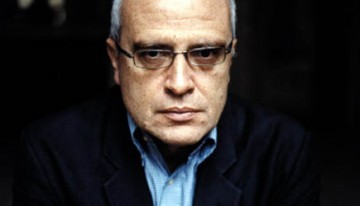 Richard Millet est un écrivain prolifique et magnifique. Son œuvre comprend une cinquantaine de livres, des romans et des essais, tous écrits dans une langue et un style qui n’ont guère d’équivalent dans la littérature française contemporaine. Le sentiment de la langue
Richard Millet est un écrivain prolifique et magnifique. Son œuvre comprend une cinquantaine de livres, des romans et des essais, tous écrits dans une langue et un style qui n’ont guère d’équivalent dans la littérature française contemporaine. Le sentiment de la langue
 del.icio.us
del.icio.us
 Digg
Digg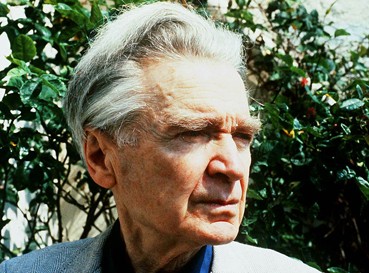
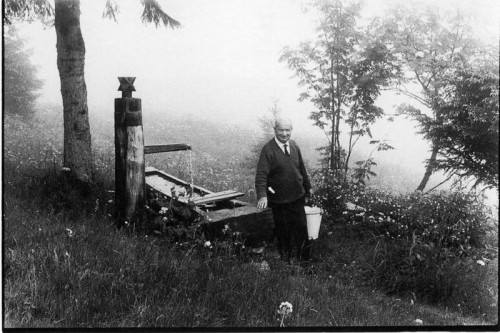
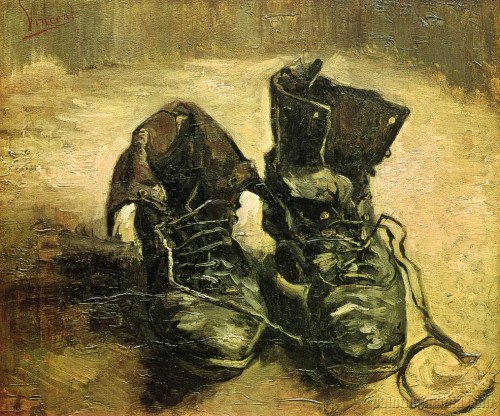
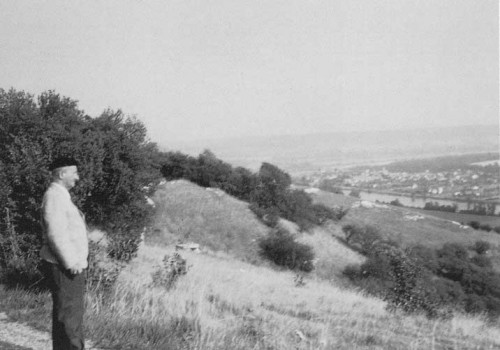

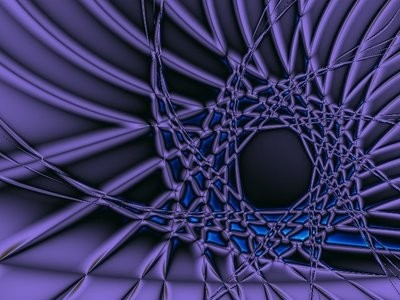
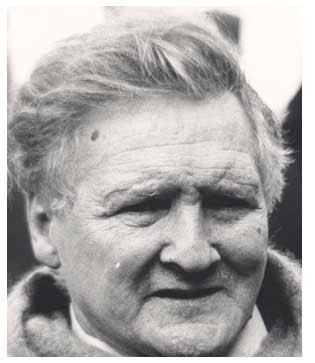
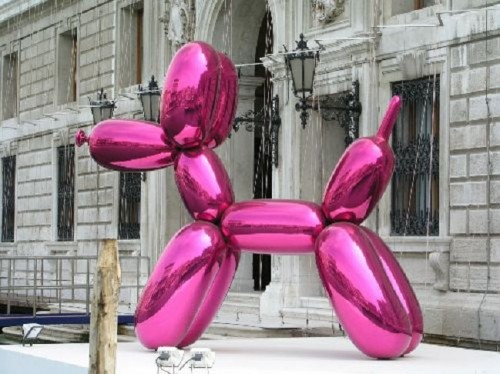

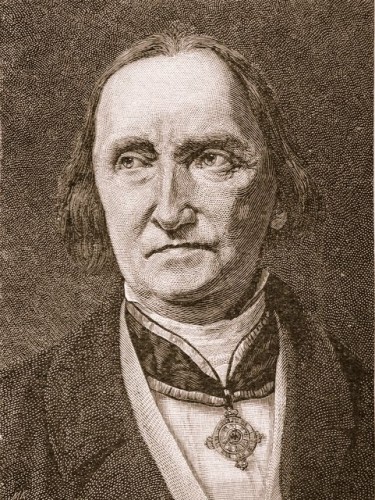
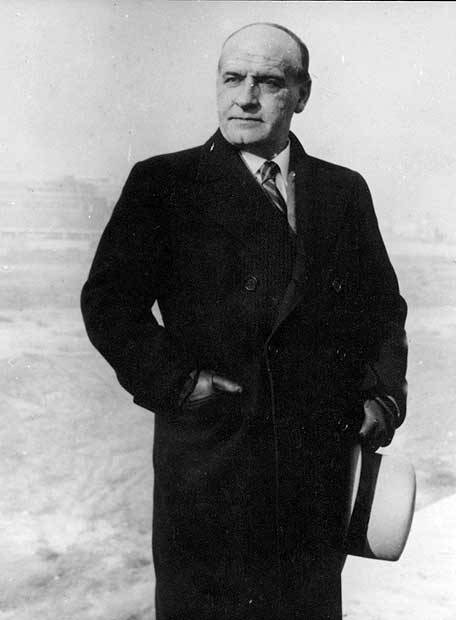
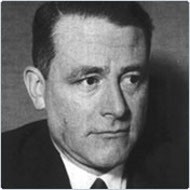

 Engagé dans les débats qui déchirent l’éphémère république espagnole (1931-1936), Ortega y Gasset finit par s’en détacher. A titre privé, il penche pour les nationalistes puis préfère quitter l’Espagne. Il n’y revient qu’en 1945, suspect à la fois aux yeux de la dictature franquiste et de l’opposition républicaine.
Engagé dans les débats qui déchirent l’éphémère république espagnole (1931-1936), Ortega y Gasset finit par s’en détacher. A titre privé, il penche pour les nationalistes puis préfère quitter l’Espagne. Il n’y revient qu’en 1945, suspect à la fois aux yeux de la dictature franquiste et de l’opposition républicaine.

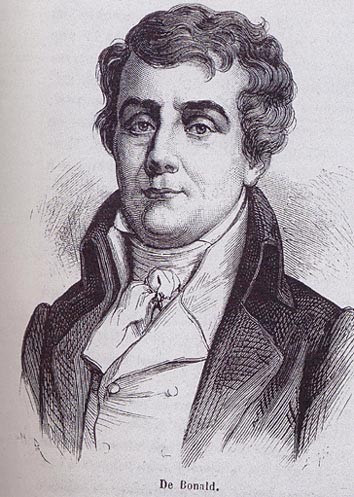
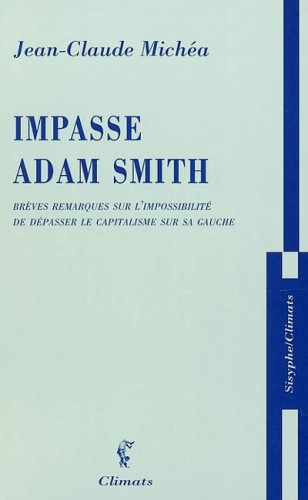 Les philosophes des Lumières vont progressivement faire de l’intérêt rationnel le seul véritable déterminant de la conduite humaine, dans le fil de Newton qui découvrit la loi de l’attraction universelle. Cette réduction de l’homme à son intérêt « bien compris », c’est-à-dire éclairé par les lumières de sa raison, débouche sur une « physique sociale » dont l’esprit des Lumières croit avoir découvert les lois indépassables. Et si tout homme est déterminé par sa nature à rechercher ce qui lui est utile, « alors l’échange économique devient l’exemple le plus net d’une relation humaine rationnelle » puisque chacun, au terme d’une négociation – un négoce – pacifique, est censé y trouver son compte.
Les philosophes des Lumières vont progressivement faire de l’intérêt rationnel le seul véritable déterminant de la conduite humaine, dans le fil de Newton qui découvrit la loi de l’attraction universelle. Cette réduction de l’homme à son intérêt « bien compris », c’est-à-dire éclairé par les lumières de sa raison, débouche sur une « physique sociale » dont l’esprit des Lumières croit avoir découvert les lois indépassables. Et si tout homme est déterminé par sa nature à rechercher ce qui lui est utile, « alors l’échange économique devient l’exemple le plus net d’une relation humaine rationnelle » puisque chacun, au terme d’une négociation – un négoce – pacifique, est censé y trouver son compte.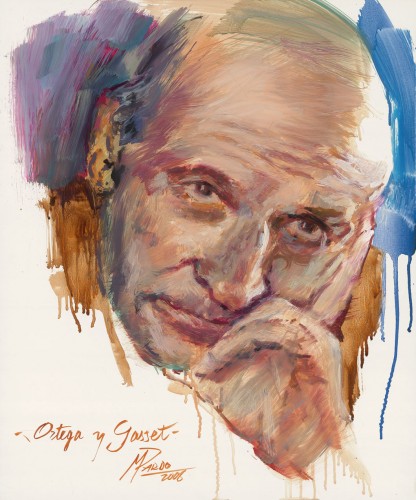
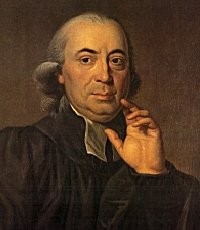
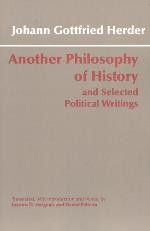 A prolific author in many different fields (poetry, art, comparative philology and linguistics, religion, mythology, philosophy of history, metaphysics, psychology or philosophy of mind, aesthetics, and political philosophy), his books most relevant to this discussion are This Too a Philosophy of History for the Formation of Humanity (1774); Ideas for the Philosophy of History of Humanity (Ideen zur Philosophie der Geschichte der Menschheit), 4 vols. (1784–91), his masterwork, in which he discussed all known peoples; and Letters for the Advancement of Humanity (Briefe zur Beförderung der Humanität), 10 vols. (1793–7), a work largely of political philosophy written in response to the French Revolution.
A prolific author in many different fields (poetry, art, comparative philology and linguistics, religion, mythology, philosophy of history, metaphysics, psychology or philosophy of mind, aesthetics, and political philosophy), his books most relevant to this discussion are This Too a Philosophy of History for the Formation of Humanity (1774); Ideas for the Philosophy of History of Humanity (Ideen zur Philosophie der Geschichte der Menschheit), 4 vols. (1784–91), his masterwork, in which he discussed all known peoples; and Letters for the Advancement of Humanity (Briefe zur Beförderung der Humanität), 10 vols. (1793–7), a work largely of political philosophy written in response to the French Revolution. Rather than giving priority to the study of ancient and modern history, as was common in the 18th century, Herder redeemed the history of the Middle Ages, feeling that it had been given short shrift. He also refused to restrict history to the study of politics, wars, and dynasties. For Herder, history was primarily the history of the Volk: its language, culture, customs, religion, literature, law, and folklore. (A writer and collector of poetry, folk songs, and legends, and an early student of comparative literature, Herder published a collection of folk songs in 1773 entitled Voices of the People in Their Songs [Stimmen der Völker in ihren Liedern].)
Rather than giving priority to the study of ancient and modern history, as was common in the 18th century, Herder redeemed the history of the Middle Ages, feeling that it had been given short shrift. He also refused to restrict history to the study of politics, wars, and dynasties. For Herder, history was primarily the history of the Volk: its language, culture, customs, religion, literature, law, and folklore. (A writer and collector of poetry, folk songs, and legends, and an early student of comparative literature, Herder published a collection of folk songs in 1773 entitled Voices of the People in Their Songs [Stimmen der Völker in ihren Liedern].)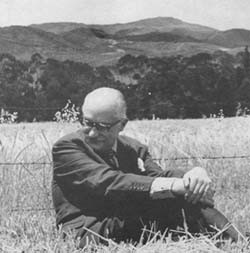
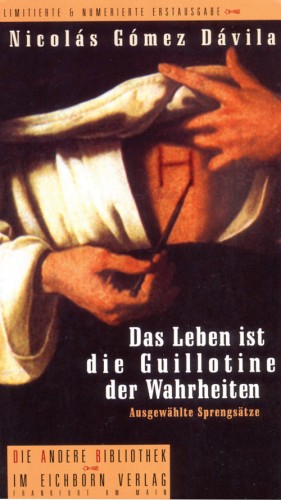 IV: Sensual, skeptical, religious
IV: Sensual, skeptical, religious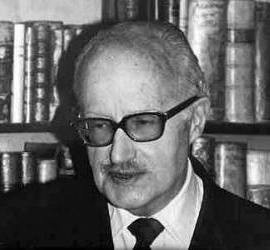 Nicolás Gómez Dávila was born in
Nicolás Gómez Dávila was born in  In 1974, he turned down the chance to become the Colombian ambassador at the Court of St. James. Although he was well disposed to both governments, Gómez Dávila had resolved early on in his “career” as a writer to stay out of politics. Although some of his friends were disappointed that he did not accept these offers, they later concluded (according to Mosebach) that he was right to refuse the honors—he would have been a disaster as a practical politician.
In 1974, he turned down the chance to become the Colombian ambassador at the Court of St. James. Although he was well disposed to both governments, Gómez Dávila had resolved early on in his “career” as a writer to stay out of politics. Although some of his friends were disappointed that he did not accept these offers, they later concluded (according to Mosebach) that he was right to refuse the honors—he would have been a disaster as a practical politician.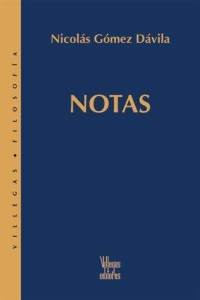 Late in life, Gómez Dávila also wrote two shorter pieces. The first, De iure (De jure) was printed in the spring 1988 issue of the Revista del Colegio Mayor de Nuestra Señora del Rosario. His final work,
Late in life, Gómez Dávila also wrote two shorter pieces. The first, De iure (De jure) was printed in the spring 1988 issue of the Revista del Colegio Mayor de Nuestra Señora del Rosario. His final work, 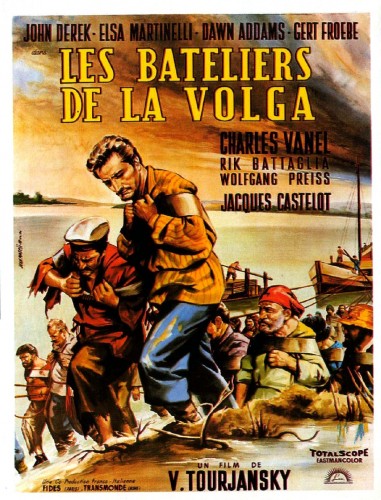
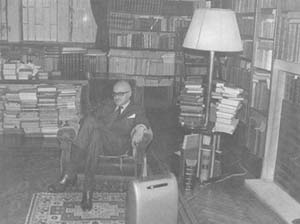
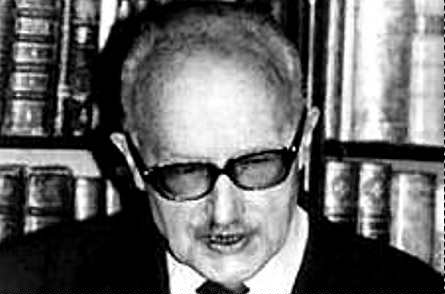
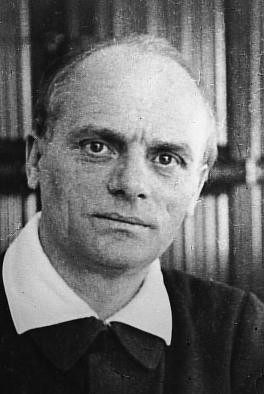 Die »Kieler Ideengeschichtlichen Studien« gewinnen mit
Die »Kieler Ideengeschichtlichen Studien« gewinnen mit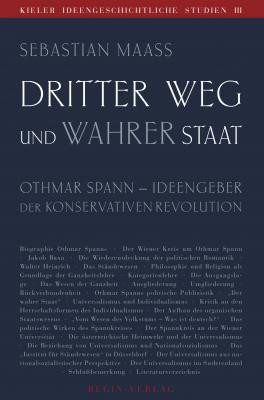 Anschließend behandelt Maaß »Philosophie und Religion als Grundlagen der Ganzheitslehre«, um über die Darlegung der »Kategorienlehre« und der politischen Publizistik (Der wahre Staat; Vom Wesen des Volkstums) den Aufbau des Spannschen »organischen« Staatswesens zu rekonstruieren. Indem der Verfasser das Wirken des Wiener Kreises um Spann sowohl in Österreich als auch dem deutschsprachigen Kulturraum analysiert, wird die meta- und realpolitische Bedeutung dieses Dritten Weges deutlich, der mit seiner machtpolitischen Ausprägung in Österreich um 1930 eine ernsthafte historische Alternative zu den »dritten Wegen« des Nationalsozialismus und des Faschismus darstellte. Das im Untertitel verwandte Konstrukt »Ideengeber der Konservativen Revolution« stellt – aufgrund der überschaubaren Rezeption von Spanns Universalismus in der Weimarer Republik – einen einzelnen Kritikpunkt an dieser soliden Monographie dar.
Anschließend behandelt Maaß »Philosophie und Religion als Grundlagen der Ganzheitslehre«, um über die Darlegung der »Kategorienlehre« und der politischen Publizistik (Der wahre Staat; Vom Wesen des Volkstums) den Aufbau des Spannschen »organischen« Staatswesens zu rekonstruieren. Indem der Verfasser das Wirken des Wiener Kreises um Spann sowohl in Österreich als auch dem deutschsprachigen Kulturraum analysiert, wird die meta- und realpolitische Bedeutung dieses Dritten Weges deutlich, der mit seiner machtpolitischen Ausprägung in Österreich um 1930 eine ernsthafte historische Alternative zu den »dritten Wegen« des Nationalsozialismus und des Faschismus darstellte. Das im Untertitel verwandte Konstrukt »Ideengeber der Konservativen Revolution« stellt – aufgrund der überschaubaren Rezeption von Spanns Universalismus in der Weimarer Republik – einen einzelnen Kritikpunkt an dieser soliden Monographie dar.
